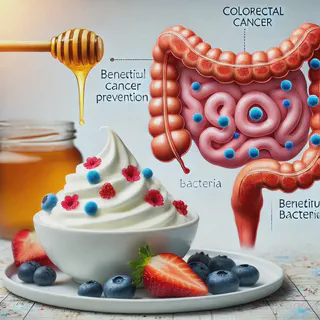Beyond Weight Loss: The Transformative Power of Intermittent Fasting
While many turn to intermittent fasting primarily for weight loss, Dr. Pelz reveals that this ancient practice offers a treasure trove of health benefits that extend far beyond shedding pounds. Let's explore how this powerful healing tool can revolutionize your health from the inside out.
The Brain-Boosting Benefits of Ketones
One of the most remarkable benefits of fasting is its ability to switch your body from glucose-burning to fat-burning mode, producing ketones in the process. According to Dr. Pelz, these ketones aren't just alternative fuel—they're premium brain food.
"If we've never dipped into the ketogenic system and given the brain ketones, then we're missing a whole fuel that the brain needs to function and perform at its best," explains Dr. Pelz.
This explains why many fasting enthusiasts report:
- Enhanced mental clarity
- Improved memory
- Sharper focus
- Greater cognitive performance
These brain-boosting benefits often surprise people who initially started fasting just to lose weight. They suddenly find themselves thinking more clearly and performing better mentally than they have in years!
The Six Fasting Protocols: A Toolbox for Targeted Healing
Dr. Pelz describes fasting not as a one-size-fits-all approach but as a versatile toolbox with different protocols designed to trigger specific healing mechanisms in the body. Here's a breakdown of her six core fasting protocols and their unique benefits:
1. 12-16 Hour Fast: The Gateway to Fat-Burning
What happens: This introductory fast initiates the switch to fat-burning mode, stimulates ketone production, and increases growth hormone and testosterone levels.
Ideal for: Beginners and those looking to make intermittent fasting a sustainable lifestyle practice.
Dr. Pelz says: "You're gonna start to switch over into the fat-burning system, you're going to get some ketones, you're going to get some growth hormone, you're going to get some testosterone—it's a great place to live."
2. 17-Hour Fast: Activating Cellular Cleanup
What happens: At the 17-hour mark, your body begins the process of autophagy—a cellular "cleanup" mechanism where damaged components are removed and recycled.
Ideal for: Those looking to improve cellular health and efficiency.
Dr. Pelz says: "Autophagy is like a dimmer switch. It starts to turn on at 17 hours. The intelligence inside the cell recognizes that no food's coming, so it becomes more efficient."
During autophagy, your body:
- Removes dysfunctional (senescent) cells
- Repairs damaged cells and mitochondria
- Improves cell membrane function
3. 24-Hour Fast: Gut Repair and Regeneration
What happens: A full day without food gives your digestive system a much-needed break, allowing it to focus on repair and regeneration.
Ideal for: People with gut issues, including those with a history of antibiotic use or digestive complaints.
Dr. Pelz says: "At 24 hours, we're getting the gut repairing. Regular 24-hour fasts can stimulate intestinal stem cells, helping the body heal itself just by giving it a break from food."
4. 36-Hour Fast: Breaking Through Weight Loss Plateaus
What happens: This longer fast forces your body to access and burn stored fat, particularly from stubborn areas like the waist, hips, and liver.
Ideal for: Those who have hit weight loss plateaus or are dealing with stubborn fat deposits.
Dr. Pelz says: "That's long enough for those stubborn weight loss situations. The body will go and find all the fat that it's stored years ago around your waist, your hips, your liver—it'll go and burn that."
5. 48-Hour Fast: Resetting Your Dopamine System
What happens: Two full days of fasting can reset your dopamine system, leading to the formation of new dopamine receptor sites.
Ideal for: People dealing with mental health challenges like depression and anxiety, or those who have lost pleasure in eating and other activities.
Dr. Pelz says: "We start to see clinically and research-wise that the whole dopamine system will be reset and new dopamine receptor sites will start to be formed. When you bring food back in, you'll start to enjoy food more. You'll also notice other things in your life you'll enjoy more because it resets the dopamine system."
6. 72-Hour Fast: Immune System Reboot & Stem Cell Production
What happens: This extended fast triggers a complete immune system overhaul and stimulates a significant surge in stem cell production throughout the body.
Ideal for: Those looking for deep immune system renewal or interested in the regenerative benefits of stem cells.
Dr. Pelz says: "Old white blood cells will be tossed away and new white blood cells will be formed. People are paying tens of thousands of dollars for stem cells right now—you throw a three-day water fast at it, and now you're getting this massive systemic surge of stem cells."
Special Considerations for Women: Syncing Fasting with Your Cycle
Dr. Pelz emphasizes that women should approach fasting with awareness of their hormonal cycles. Here are her key recommendations:
Menstrual Cycle Awareness
Avoid longer fasts (48+ hours) during:
- The luteal phase (day 20 onwards)
- Around ovulation (days 10-15)
Best time for fasting: The follicular phase (days 1-10 after menstruation begins)
Recommended Fasting Frequency
Dr. Pelz suggests the following cadence for different fasting protocols:
- 72-hour fasts: Twice a year (e.g., January and September) for general health and removal of senescent cells
- 48-hour fasts: Once a quarter for mental health support
- 36-hour fasts: Once a month for those struggling with weight loss
- 24-hour fasts: Once a week, or varied weekly depending on your cycle
- 12-17 hour fasts: Can be a regular lifestyle practice, except the week before menstruation
Remember, these are guidelines, not rigid rules. The optimal fasting schedule depends on your individual goals, health status, and how your body responds.
The Do's and Don'ts of Fasting: What Can You Consume?
One of the most common questions about fasting is: "What can I have during a fast without breaking it?" Dr. Pelz offers some nuanced guidance:
Hydration is Non-Negotiable
Water is essential during all fasting periods. Stay well-hydrated to support your body's detoxification processes and maintain energy levels.
The Coffee Question
Black coffee is generally acceptable during a fast for most people. However, Dr. Pelz recommends testing your blood sugar levels after consuming it to ensure it doesn't break your fasted state.
Coffee with cream is more controversial. Adding cream can potentially raise blood sugar levels and break a fast. Dr. Pelz suggests a simple test:
- Check your baseline blood sugar
- Drink coffee with cream
- Check your blood sugar 30 minutes later
- If the difference is 5 points or more, it likely disrupted your fasted state
MCT oil in coffee may actually be beneficial as it can accelerate the transition into ketosis without significantly raising blood sugar or insulin levels.
The Microbiome Factor
Dr. Pelz highlights an important point: how your body responds to substances during a fast largely depends on your unique microbiome.
"People with a good, diverse, healthy microbiome typically get away with cream in their coffee—it can actually cause their blood sugar to go down," she notes.
This explains why fasting experiences can vary so dramatically from person to person, and why it's important to avoid rigid, absolute rules.
Avoiding the "Absolutes Trap"
Perhaps one of Dr. Pelz's most valuable insights is her warning against adhering to rigid, absolute rules regarding fasting.
"I think when it comes to health and nutrition, we really get into danger when we look for absolutes," she cautions. "Because of the microbiome, we are so diverse."
This bio-individuality means that the optimal fasting approach for you might look quite different from someone else's. Self-experimentation and monitoring (like blood sugar testing) are encouraged to personalize your fasting experience.
Conclusion: Fasting as a Healing Tool, Not Just a Diet
Dr. Mindy Pelz presents intermittent fasting not as a trendy diet but as a powerful healing tool that can be strategically employed to address specific health concerns and goals.
By understanding the different types of fasts and their unique physiological impacts, you can incorporate fasting into your lifestyle in a way that supports your individual health journey. Whether you're looking to enhance brain function, repair your gut, reset your dopamine system, or stimulate stem cell production, there's a fasting protocol designed to help you achieve that goal.
Remember, the key to successful fasting lies in personalization, consistency, and listening to your body's signals. Start with shorter fasting windows and gradually extend as your body adapts. And always consult with a healthcare provider before embarking on longer fasts, especially if you have underlying health conditions.
Have you tried intermittent fasting? What benefits have you noticed? Share your experiences in the comments below!
Disclaimer: This article is for informational purposes only and should not be considered medical advice. Always consult with a qualified healthcare provider before starting any new health regimen, including fasting.


